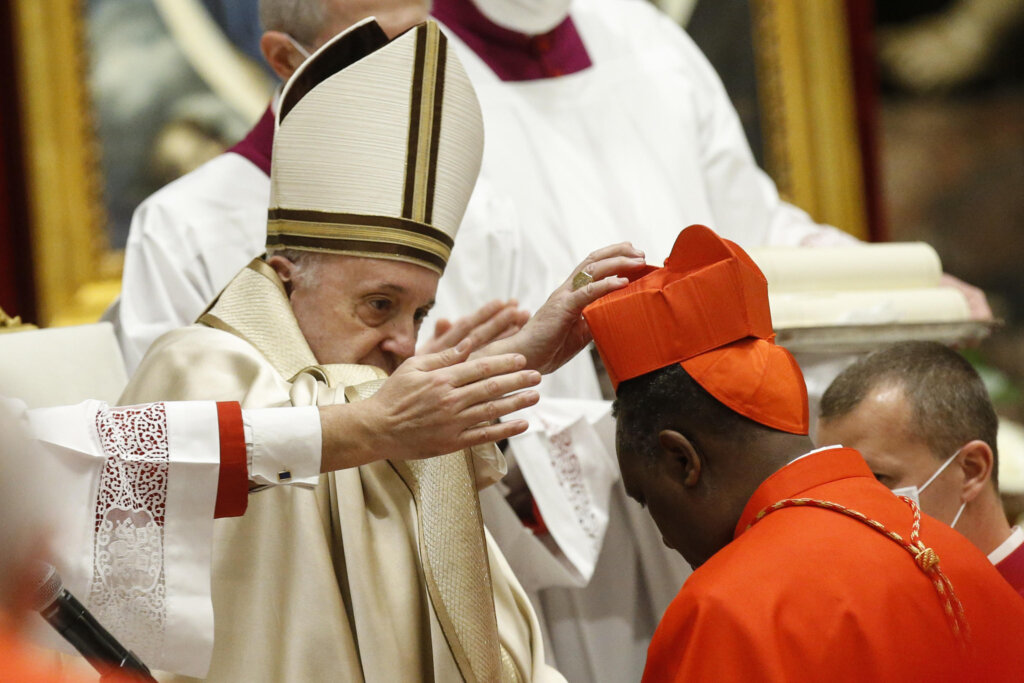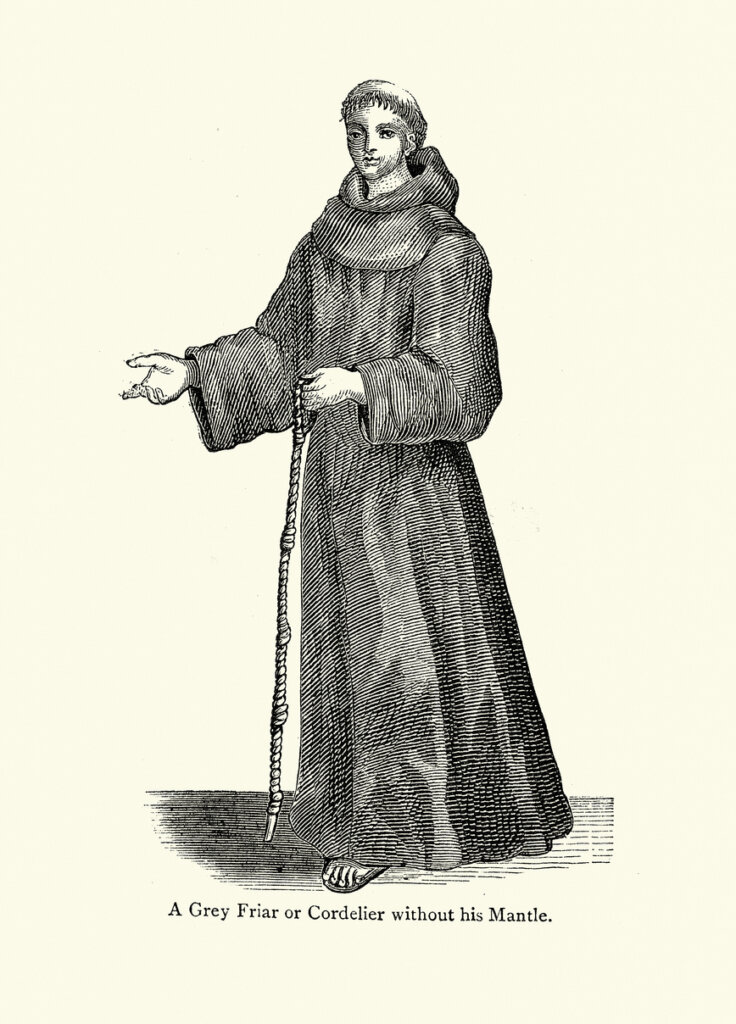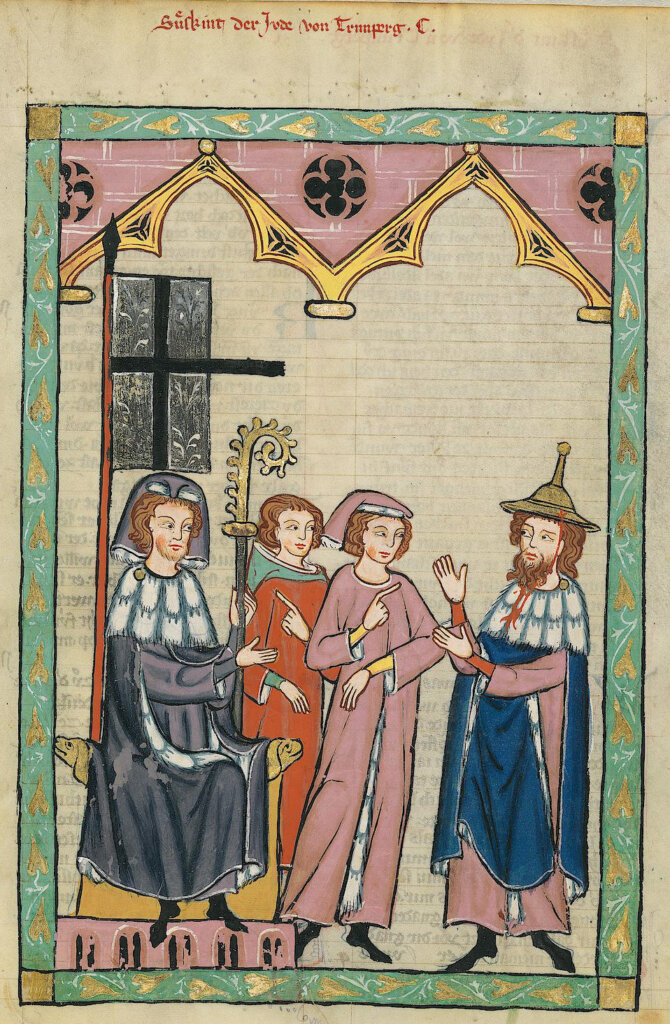A Red Sea of yarmulkes, if you will. Courtesy of Getty Images
If you’ve been tracking the gossip around the upcoming conclave — or if you’ve seen Conclave — I bet there’s one question dominating your mind: What is up with those hats?
OK, obviously there are other, bigger questions about the secretive meeting of cardinals who will elect the next pope. Will Francis’ successor be liberal on topics like divorce, contraception and gay marriage? Will the next pope be from Europe or will we get the first pope of color? What, if you want to get nerdy about it, is their stance on Vatican II or the Latin Mass?
Still, it’s hard not to stare at the sumptuous clothing that dominates all parts of the Vatican’s pomp and circumstance. The gilded crucifixes, the embroidered capes, the scarlet cassocks, the heavy signet rings and, of course, the yarmulkes. Each cardinal wears a tiny, stemmed red hat, and they’re not the only ones — bishops wear pink (technically the color is “amaranth”) hats, the pope wears one in white and lower priests wear a black cap.
Maybe non-Jews are not as fascinated by the tiny red hats that the cardinals wear. But for those of us who are used to skullcaps in a different context, it’s deeply confusing. Kippahs are usually a reliable sign that the wearer is Jewish! You can usually even tell what kind of Jew they might be: embroidered styles are common amongst Bukharian Jews; Breslovers wear white with a pom-pom; crochet is so popular amongst the Religious Zionist movement that its members are also called “kippah srugah,” which translates to “knitted cap”; and colorful satin implies you probably got it for free at someone’s bar mitzvah.
I know this is obvious but: Cardinals are definitely not Jewish. So why do they wear yarmulkes?
Pumpkin hats

The official name for the kippah-like hat is a pileolus but it has many names; the most common is zucchetto, which means “gourd” or “pumpkin” in Italian, thanks to its panels and the small stem sticking out from the center of the cap.
Similar to a kippah, which many observant Jews keep on underneath grander hats like the Shabbat shtreimel, the zucchetto can be worn alone, but also underneath the square, three-peaked biretta — another cardinal hat with a fun pompom on top — or the mitre, a tall white hat that looks vaguely like a chef’s toque.
But in a reversal of Judaism, which interprets the kippah as a reminder of God’s presence above humanity and a sign of reverence, the zucchetto is removed on reverential occasions. It must be doffed to one’s ecclesiastical superior and removed during the Eucharist portion of the Mass. (Some churches have a rounded stand for the zucchetto to be placed on, known as a funghellino, or little mushroom, in keeping with the vegetal theme.)
And the zucchetto is not worn by laity; it’s only allowed for ordained religious officials. (It’s also used by some Anglican priests.) Because of this, zucchetti are often collectors items; some popes have a tradition of handing out their worn zucchetti to the faithful laity, who will often bring new ones to swap in for the gift.
Which came first, the kippah or the zucchetto?
It’s hard to track when yarmulkes or zucchetti became customary parts of Jewish dress, or Vatican liturgical outfits; neither is required by any early or foundational religious texts. Jesus doesn’t tell his followers to wear hats, and neither does the Torah.
Most church texts trace zucchetti to the monastic practice of tonsure, a practice of shaving part of the head that emerged in the early church. The zucchetto came about as a way to insulate the resulting bald spot in cold, drafty churches.

Originally, the haircut was associated with Saint Peter, whose head was shaved as punishment when he tried to proselytize. But other theological rationales for the distinctive style emerged over time, with Thomas Aquinas describing it as a royal crown to mark the godliness of clerics, and others simply referring to it as an important sign Christians could use to set themselves apart from society.
Still, there was no need for hats at first; early tonsures seem to have been a largely symbolic clipping of only a few locks of hair. A larger tonsure, in which just a ring of hair was left around the edges of the scalp, became more common in the medieval era as a required part of ordination. And along with this form of tonsure came the need to cover the head.
Eventually, the tonsure fell out of fashion. By the 1970s, when the Vatican officially did away with tonsure for clerics, the zucchetto had acquired so much meaning and tradition that it continued to be part of the pontifical vestments.
Tracing the origin of the kippah is more complicated. Though Jews — and many others — often wore distinctive hats historically, they were not necessarily so small and round. And they did not carry theological significance. Though some rulers throughout history required Jews to wear distinctive hats to identify them, the hats were not otherwise religiously meaningful.
Still, the idea that a hat can be part of religious observance has existed since around the 3rd century, even if it was not common practice. The first mention of wearing a head covering that had any connection to God is in the Talmud; Rav Nachman’s mother is told that her son is destined to be a thief. To prevent him from becoming immoral, she tells him to wear a hat such that “the fear of heaven may be upon you.” He does, and it is only when his hat falls off that he is possessed by a desire to steal — the lesson being that the hat helped him to remember the commandments.

But head coverings were not considered required, nor were they common. It wasn’t until the Shulchan Aruch, a legal compendium from the 1500s, that head coverings were codified for Jewish men, and just during worship. It was considered a praiseworthy act of piety to cover one’s head the rest of the time, but not a requirement. But rabbis still disagreed — and continue to do so — on whether any occasions required a head covering.
And the shape and form of a kippah is far more modern than the practice of covering one’s head. Jews wore hats of all shapes and sizes throughout history. Even the so-called “Jewish hat” which was required of Jews in the Middle Ages looked nothing like today’s kippah; it was tall and conical. While Jews may have worn smaller caps, closer to kippot, at various points in history or in certain regions, it wasn’t a consistent practice.
Today, many Jews consider wearing a kippah to be required due to a belief that tradition acquires the force of law if it is widely practiced. But even then, the covering need not necessarily be with a yarmulke — any hat will do. The small, round version is simply tradition, and a way to identify yourself as a Jew.
Or, apparently, to identify yourself as a Catholic cleric. It seems they’ve been wearing the tiny hats more consistently, for longer. I guess the real question is: Why do Jews wear zucchetti?

I hope you appreciated this article. Before you go, I’d like to ask you to please support the Forward.
Now more than ever, American Jews need independent news they can trust, with reporting driven by truth, not ideology. We serve you, not any ideological agenda.
At a time when other newsrooms are closing or cutting back, the Forward has removed its paywall and invested additional resources to report on the ground from Israel and around the U.S. on the impact of the war, rising antisemitism and polarized discourse.
This is a great time to support independent Jewish journalism you rely on. Make a gift today!
— Rachel Fishman Feddersen, Publisher and CEO

